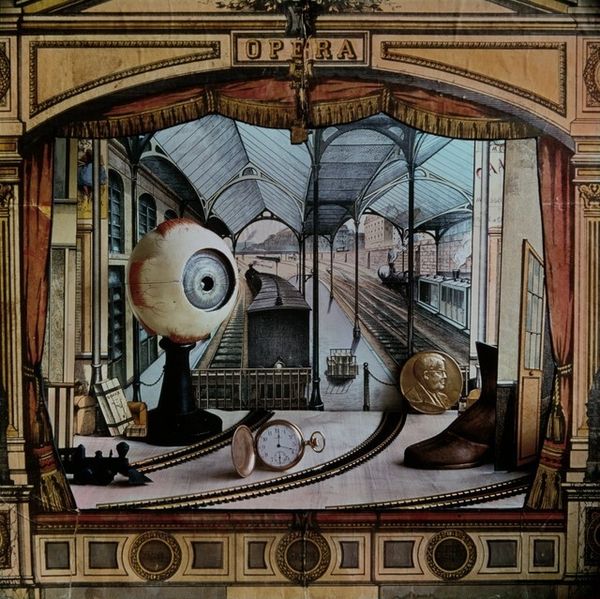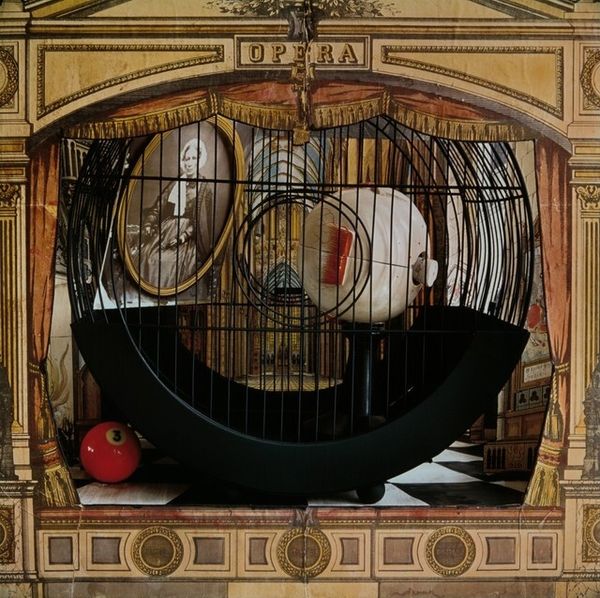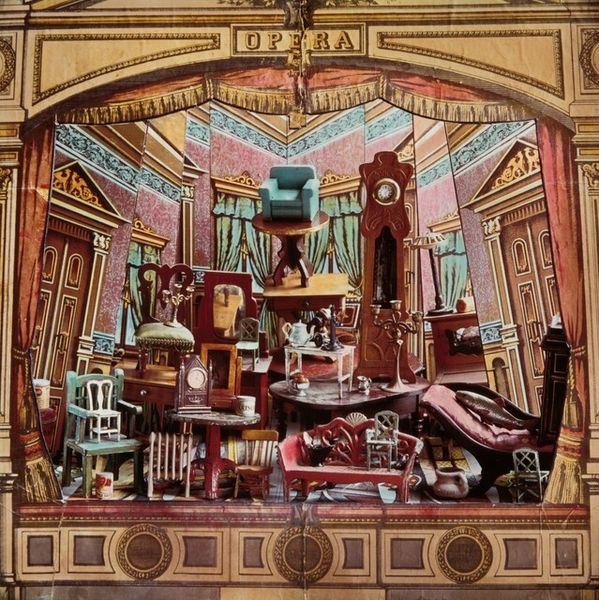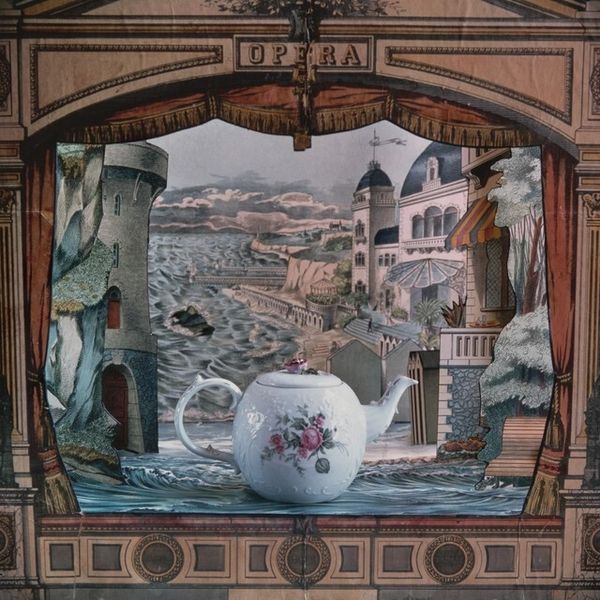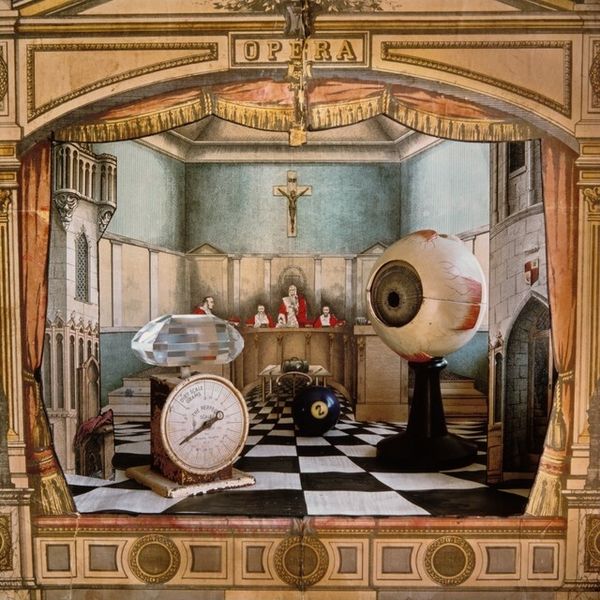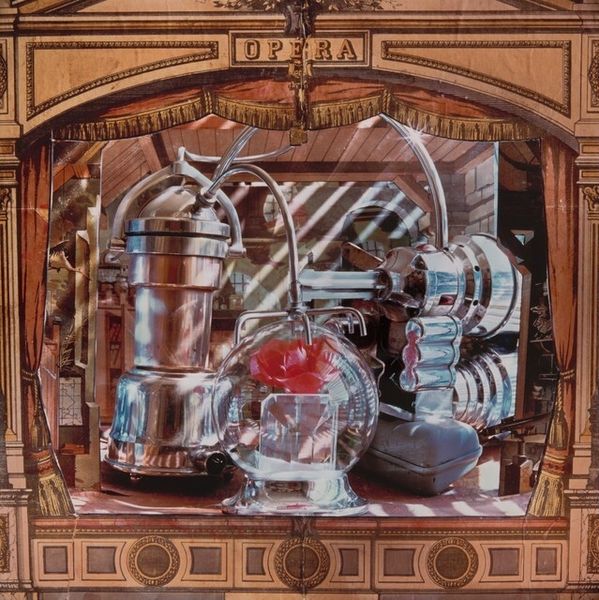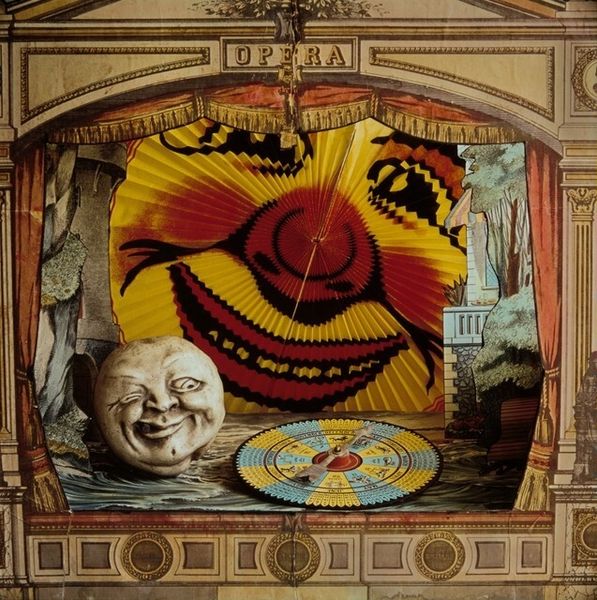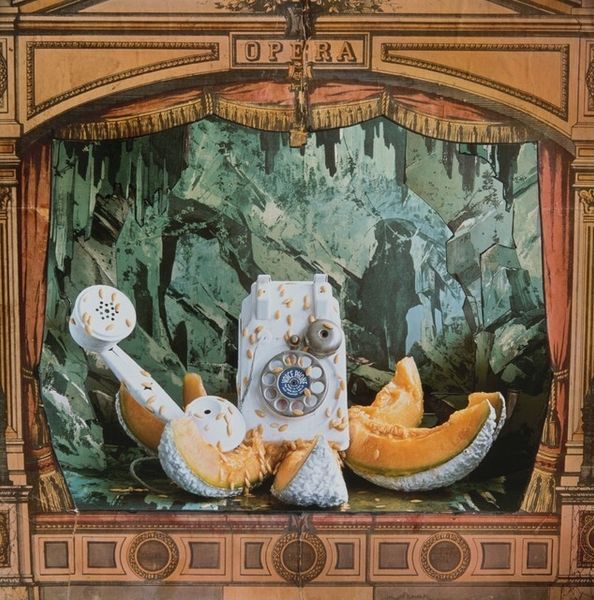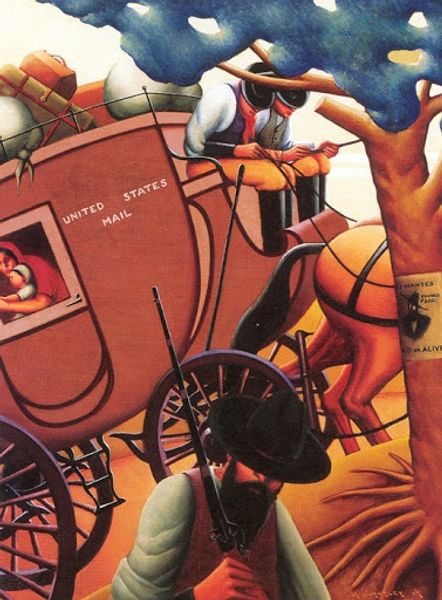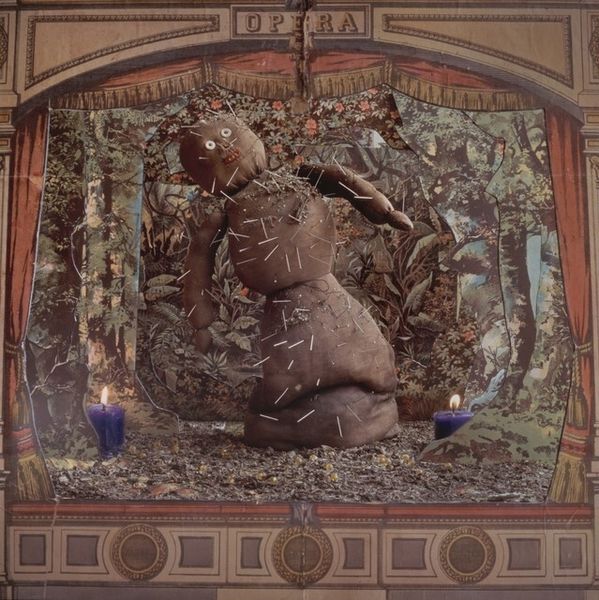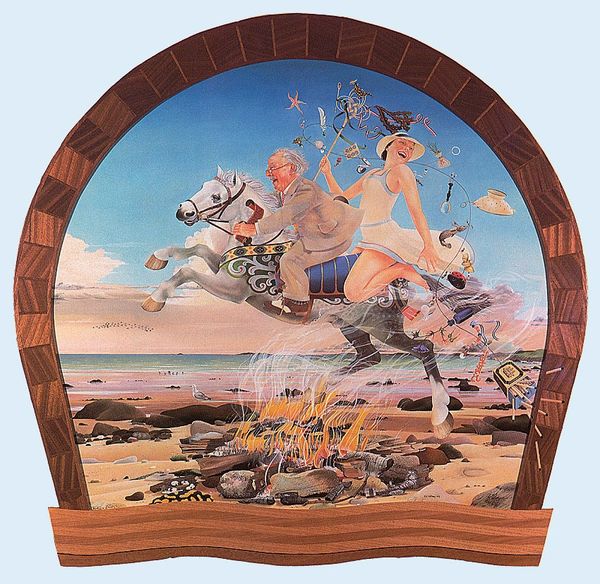
mixed-media, collage, assemblage, print, photography, sculpture, installation-art
#
mixed-media
#
collage
#
narrative-art
#
assemblage
# print
#
sculpture
#
fantasy-art
#
photography
#
folk-art
#
sculpture
#
installation-art
#
surrealism
Dimensions: image: 26.5 × 26.5 cm (10 7/16 × 10 7/16 in.) sheet: 27.94 × 35.56 cm (11 × 14 in.)
Copyright: National Gallery of Art: CC0 1.0
Curator: This fantastical piece before us is titled "Act III: The Final Judgment: To await the return of Spring." Arthur Tress created it in 1980, combining photography, collage, and sculptural assemblage into something truly unique. Editor: My immediate thought is "disquieting beauty." The composition, framed like a vintage stage set, presents this bizarre juxtaposition of elements. A giant eyeball floating above chickens and what looks like a ritual cart overflowing with flowers... It’s unsettling and alluring. Curator: Tress often used this kind of theatrical presentation, reflecting the late 20th century's cultural shift toward performance and staged photography as valid art forms. He intentionally blurred boundaries between reality and fiction. Editor: The eyeball looms large, doesn’t it? It immediately triggers associations with surveillance, divine judgment, even the all-seeing eye motif present across various mythologies and conspiracy theories. And the spring theme contrasts eerily with this judging gaze. Curator: The juxtaposition is deliberate, I believe. Consider that folk art aesthetic – chickens symbolizing new beginnings, a child’s cart suggesting innocence, contrasted with a 'final judgement'. The return of spring as a time of rebirth, perhaps awaiting scrutiny? Editor: Visually, the use of eggs in conjunction with chicks creates this visual language of springtime themes of innocence and vulnerability. Juxtaposed with that omnipresent eye watching the subjects below as a surveillance, perhaps waiting, as suggested in the work's name. It raises an underlying disquiet about being watched. Curator: And within the history of art and display, this use of layered collage as theatre also draws connections to Victorian shadow boxes or dioramas; nostalgic yet deeply unconventional. It plays with those ideas. Editor: It makes you wonder what "final judgment" Tress had in mind. Is it societal judgment, personal reckoning, or something more allegorical? The lack of clear resolution is, I think, part of what makes this image linger in your mind. Curator: Yes, and what’s significant is that this piece exists as a commentary through this historical lens as cultural observers in contemporary society. This commentary creates this eerie balance between the unsettling and beauty of what has been presented through the stage. Editor: Thinking about it more deeply, this intersection of the beautiful, innocent imagery, and the disconcerting "all seeing eye" really adds to the layers this work possesses. Curator: Absolutely. A piece that offers endless layers and ongoing conversation, continuing well beyond our viewing of it today.
Comments
No comments
Be the first to comment and join the conversation on the ultimate creative platform.
